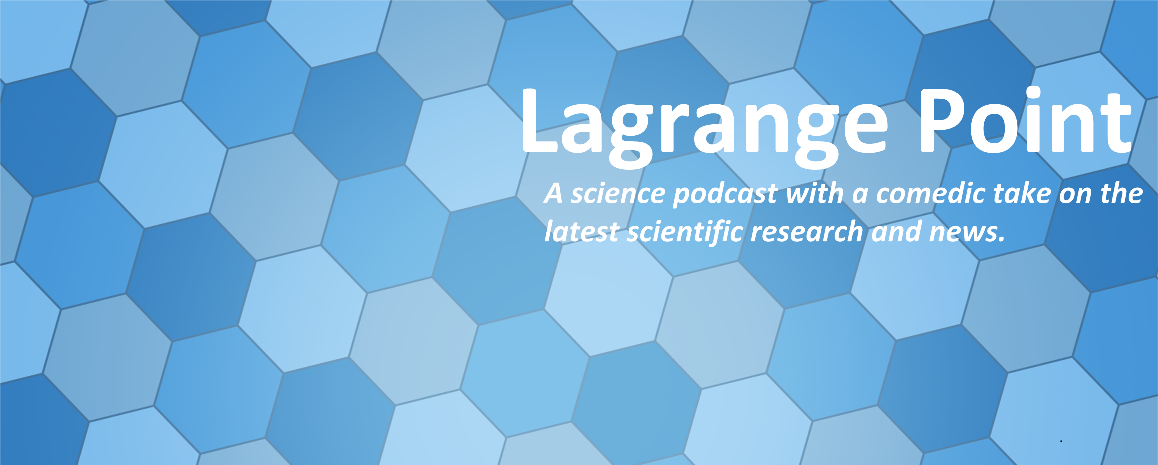Episodes
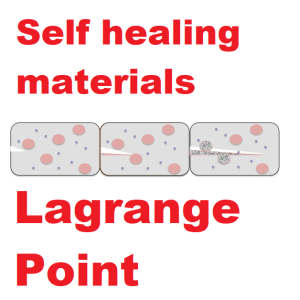
Monday Oct 29, 2018
Episode 298 - Self healing materials, scratch tests and the crockmeter
Monday Oct 29, 2018
Monday Oct 29, 2018
Self healing materials sound like science fiction, but how can we turn them into a reality? What does self healing even mean? We dive into the material science of self healing systems to find out what mechanism are used and how you can make a material heal. Plus we find out how you can make a self healing material out of common plastics using one of the weakest forces. Plus how scientists test and assess different materials including using....a crockmeter.
References:
- Marek W. Urban, Dmitriy Davydovich, Ying Yang, Tugba Demir, Yunzhi Zhang, Leah Casabianca. Key-and-lock commodity self-healing copolymers. Science, 2018; 362 (6411): 220 DOI: 10.1126/science.aat2975
- Linqian Feng, Beatrice (Nadia) Benhamida, Chen-Yuan Lu, Li Piin Sung, Pierre Morel, Andrew T. Detwiler, Jon M. Skelly, Leslie T. Baker, Deepanjan Bhattacharya. Fundamentals and characterizations of scratch resistance on automotive clearcoats. Progress in Organic Coatings, 2018; 125: 339 DOI: 10.1016/j.porgcoat.2018.09.011

Monday Oct 22, 2018
Monday Oct 22, 2018
Making new treatments often starts by finding out just what building blocks you have. But what if you could use the blocks with whole new sets? What if you could see how the blocks changed between owners? What about making your own brand new blocks? When fighting bacteria, we need every tool we can get. This week we find out about some great ways to take the fight back to bacteria in new and interesting ways from artificial cells, or new combinations of treatments, even to tracking the way bacteria changes over aeons.
References:
- Emily J. Richardson, Rodrigo Bacigalupe, Ewan M. Harrison, Lucy A. Weinert, Samantha Lycett, Manouk Vrieling, Kirsty Robb, Paul A. Hoskisson, Matthew T. G. Holden, Edward J. Feil, Gavin K. Paterson, Steven Y. C. Tong, Adebayo Shittu, Willem van Wamel, David M. Aanensen, Julian Parkhill, Sharon J. Peacock, Jukka Corander, Mark Holmes, J. Ross Fitzgerald. Gene exchange drives the ecological success of a multi-host bacterial pathogen. Nature Ecology & Evolution, 2018; 2 (9): 1468 DOI: 10.1038/s41559-018-0617-0
- Elif Tekin, Cynthia White, Tina Manzhu Kang, Nina Singh, Mauricio Cruz-Loya, Robert Damoiseaux, Van M. Savage, Pamela J. Yeh. Prevalence and patterns of higher-order drug interactions in Escherichia coli. npj Systems Biology and Applications, 2018; 4 (1) DOI: 10.1038/s41540-018-0069-9
- Yunfeng Ding, Luis E. Contreras-Llano, Eliza Morris, Michelle Mao, Cheemeng Tan. Minimizing Context Dependency of Gene Networks Using Artificial Cells. ACS Applied Materials & Interfaces, 2018; DOI: 10.1021/acsami.8b10029
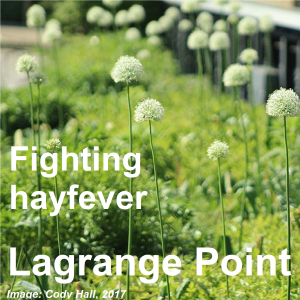
Monday Oct 15, 2018
Monday Oct 15, 2018
A change of seasons means you may be sniffling, sneezing and having teary eyes. So why do our bodies sometimes cause such an over the top response to pollen? We dive into the science behind hay fever, what histamine even does for you, and how it's helping you in more ways than you realise. Plus we find out what's being done to deliver a 1,2,3 blow to Traveller's Diarrhoea.
References:
- Alessandra Misto, Gustavo Provensi, Valentina Vozella, Maria Beatrice Passani, Daniele Piomelli. Mast Cell-Derived Histamine Regulates Liver Ketogenesis via Oleoylethanolamide Signaling. Cell Metabolism, 2018; DOI: 10.1016/j.cmet.2018.09.014
- Caroline B.K. Mathiesen, Michael C. Carlsson, Stephanie Brand, Svenning Rune Möller, Manja Idorn, Per thor Straten, Anders E. Pedersen, Sally Dabelsteen, Adnan Halim, Peter Adler Würtzen, Jens Brimnes, Henrik Ipsen, Bent L. Petersen, Hans H. Wandall. Genetically engineered cell factories produce glycoengineered vaccines that target antigen-presenting cells and reduce antigen-specific T-cell reactivity. Journal of Allergy and Clinical Immunology, 2018; DOI: 10.1016/j.jaci.2018.07.030
- Renee M. Laird, Zuchao Ma, Nelum Dorabawila, Brittany Pequegnat, Eman Omari, Yang Liu, Alexander C. Maue, Steven T. Poole, Milton Maciel, Kavyashree Satish, Christina L. Gariepy, Nina M. Schumack, Annette L. McVeigh, Frédéric Poly, Cheryl P. Ewing, Michael G. Prouty, Mario A. Monteiro, Stephen J. Savarino, Patricia Guerry. Evaluation of a conjugate vaccine platform against enterotoxigenic Escherichia coli (ETEC), Campylobacter jejuni and Shigella. Vaccine, 2018; DOI: 10.1016/j.vaccine.2018.09.052

Monday Oct 08, 2018
Episode 295 - Powerful and precise Lasers - Nobel Prize in Physics '18
Monday Oct 08, 2018
Monday Oct 08, 2018
Laser are used in some many things around us from computer storage, discs, communication, medical scanning and even laser surgery. Turning lasers from an expensive tool in the exclusive hands of large laboratories to something people all over the world can simply and easily use required groundbreaking physics. As did turning a laser into a pair of precise tweezers. For that groundbreaking research Arthur Ashkin, Gerad Morou and Donna Strickland won the Nobel Prize in physics in 2018. We find out about lasers, how they're used and how they were made powerful and precise.
References:
- Ashkin, A. (1997) Optical trapping and manipulation of neutral particles using lasers,
Proc. Natl. Acad. Sci. USA, Vol. 94, pp. 4853–4860 - Strickland, D. and Mourou, G. (1985) Compression of Amplified Chirped Optical Pulses,
Optics Communications , Vol. 56, Nr 3 - How Lasers Work. (2018). Retrieved from https://lasers.llnl.gov/education/how_lasers_work
- The Royal Swedish Academy of Sciences, The Nobel Committee for Physics. (2018, October). Tools made of light [Press release]. Retrieved from https://www.nobelprize.org/uploads/2018/10/popular-physicsprize2018.pdf
- Image Credit: Baxley/JILA, National Institute of Standards and Technology, Extreme ultraviolet (EUV) frequency comb, 2012
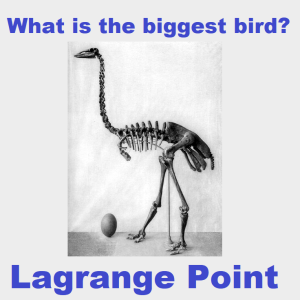
Monday Oct 01, 2018
Episode 294 - What is the biggest bird; Island Giants and dwarfs.
Monday Oct 01, 2018
Monday Oct 01, 2018
What is the biggest bird? Why do some species in some locations end up becoming giants? What makes islands like Madagascar so special and why are so many of the species once found there so very large in size? This week we look at island gigantism and island dwarfism across the world with a focus on the giant Elephant birds of Madagascar.
References:
- James P. Hansford, Samuel T. Turvey. Unexpected diversity within the extinct elephant birds (Aves: Aepyornithidae) and a new identity for the world's largest bird. Royal Society Open Science, 2018; 5 (9): 181295 DOI: 10.1098/rsos.181295
- James Hansford, Patricia C. Wright, Armand Rasoamiaramanana, Ventura R. Pérez, Laurie R. Godfrey, David Errickson, Tim Thompson, Samuel T. Turvey. Early Holocene human presence in Madagascar evidenced by exploitation of avian megafauna. Science Advances, 2018; 4 (9): eaat6925 DOI: 10.1126/sciadv.aat6925
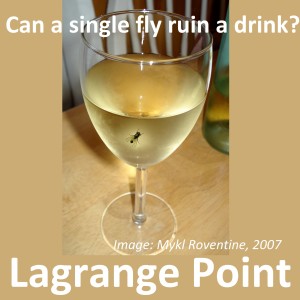
Monday Sep 24, 2018
Monday Sep 24, 2018
Can a single fly ruin a drink? How long does the fly even need to be in there to destroy the quality and taste? How does a fly even manage to ruin your sense of taste? These important questions were answered by the winners of the Ignobel Prize 2018 in Biology.
Does having a more expensive label on something make it feel 'better' to eat, drink or use? What's going on in our brain when the "Label Placebo" effect takes hold? If you're an expert are you more easily swayed by the placebo than a regular person?
- "The Scent of the Fly," Paul G. Becher, Sebastien Lebreton, Erika A. Wallin, Erik Hedenstrom, Felipe Borrero-Echeverry, Marie Bengtsson, Volker Jorger, and Peter Witzgall, bioRxiv, no. 20637, 2017.
- Marketing actions can modulate neural representations of experienced pleasantness, Hilke Plassmann, John O'Doherty, Baba Shiv, Antonio Rangel, Proceedings of the National Academy of Sciences Jan 2008, 105 (3) 1050-1054; DOI: 10.1073/pnas.0706929105
- Goldstein, R., Almenberg, J., Dreber, A., Emerson, J., Herschkowitsch, A. and Katz, J. (2008). Do More Expensive Wines Taste Better? Evidence from a Large Sample of Blind Tastings. Journal of Wine Economics, 3(01), pp.1-9.
- Liane Schmidt, Vasilisa Skvortsova, Claus Kullen, Bernd Weber, Hilke Plassmann. How context alters value: The brain’s valuation and affective regulation system link price cues to experienced taste pleasantness. Scientific Reports, 2017; 7 (1) DOI: 10.1038/s41598-017-08080-0
- Trei, L. (2018). Price changes way people experience wine, study finds. [online] Stanford University. Available at: https://news.stanford.edu/news/2008/january16/wine-011608.html [Accessed 15 Sep. 2018].
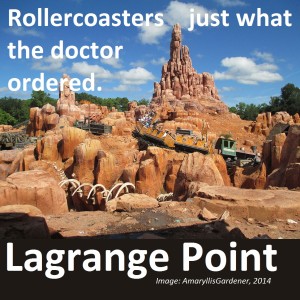
Monday Sep 17, 2018
Monday Sep 17, 2018
It's Ignobel Prize 2018 time. As part of Improbable Research's celebration of curious and comedic science, we find out the rollercoasters, and how they are just what the doctor ordered. The Ignobel Prize 2018 in Medicine went to Mitchel and Wartinger for their ground breaking work into how to use rollercoasters to treat Kidney stones. We look into how rollercoasters work, their impact on the body, and how it can help pass kidney stones. Plus we look at some research into how rollercoaster g-force can impact your brain.
References:
- Marc A. Mitchell, David D. Wartinger. Validation of a Functional Pyelocalyceal Renal Model for the Evaluation of Renal Calculi Passage While Riding a Roller Coaster. The Journal of the American Osteopathic Association, 2016; 116 (10): 647 DOI: 10.7556/jaoa.2016.128
- ROLLER COASTER PHYSICS & G FORCES - COASTERFORCE. (2018). Retrieved from http://coasterforce.com/physics/
- DeHart, Roy L. (2002). Fundamentals of Aerospace Medicine: 3rd Edition. Lippincott Williams & Wilkins.
- "NASA Physiological Acceleration Systems". Web.archive.org. 2008-05-20. Archived from the original on 2008-05-20. Retrieved 2012-12-25.
- NASA Technical note D-337, Centrifuge Study of Pilot Tolerance to Acceleration and the Effects of Acceleration on Pilot Performance, by Brent Y. Creer, Captain Harald A. Smedal, USN (MC), and Rodney C. Vtlfngrove, figure 10
- NASA Technical note D-337, Centrifuge Study of Pilot Tolerance to Acceleration and the Effects of Acceleration on Pilot Performance, by Brent Y. Creer, Captain Harald A. Smedal, USN (MC), and Rodney C. Vtlfngrove
- Kuo, Calvin & Wu, Lyndia & P Ye, Patrick & Laksari, Kaveh & Benjamin Camarillo, David & Kuhl, Ellen. (2017). Pilot Findings of Brain Displacements and Deformations During Roller Coaster Rides. Journal of neurotrauma. 34. 10.1089/neu.2016.4893.
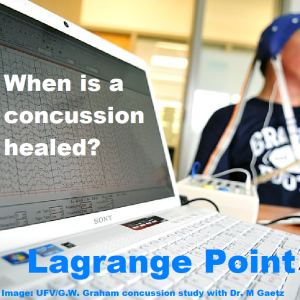
Monday Sep 10, 2018
Episode 291 - Concussion science, assessment frameworks and biomarkers
Monday Sep 10, 2018
Monday Sep 10, 2018
Concussions are a serious issue for everyone from the largest professional leagues to the weekend amateurs. The CDC has released some updated guidelines for assessing concussions and we dive into some new tests to help take the decision out of players hands and back it up with some sound evidence.
- Angela Lumba-Brown, David W. Wright, Kelly Sarmiento, Debra Houry. Emergency Department Implementation of the Centers for Disease Control and Prevention Pediatric Mild Traumatic Brain Injury Guideline Recommendations. Annals of Emergency Medicine, 2018; DOI: 10.1016/j.annemergmed.2018.03.045
- Johnson VE, Stewart W, Smith DH. Axonal pathology in traumatic brain injury. Experimental Neurology. 246: 35-43 (2013).
- Ling H, Hardy, J, Zetterberg H. Neurological consequences of traumatic brain injuries in sports. Molecular and Cellular Neuroscience. 66(B): 114-122 (2015).
- Alexander M. Weber, Anna Pukropski, Christian Kames, Michael Jarrett, Shiroy Dadachanji, Jack Taunton, David K. B. Li, Alexander Rauscher. Pathological Insights From Quantitative Susceptibility Mapping and Diffusion Tensor Imaging in Ice Hockey Players Pre and Post-concussion. Frontiers in Neurology, 2018; 9 DOI: 10.3389/fneur.2018.00575
- Pashtun Shahim, Yelverton Tegner, Niklas Marklund, Kaj Blennow, Henrik Zetterberg. Neurofilament light and tau as blood biomarkers for sports-related concussion. Neurology, 2018; 10.1212/WNL.0000000000005518 DOI: 10.1212/WNL.0000000000005518
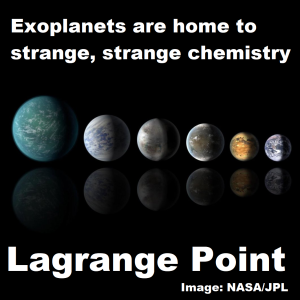
Monday Sep 03, 2018
Monday Sep 03, 2018
Exoplanets are home to some extremely out of this world chemistry. From raining diamonds, to gaseous iron and titanium, even to secret supplies of water. If we want to understand just how unique our place in the universe is, we can try and replicate the odd conditions of exoplanets right here on earth.
References
- Peter M. Celliers et al. Insulator-metal transition in dense fluid deuterium. Science, 2018 DOI: 10.1126/science.aat0970
- Sergey S. Lobanov, Qiang Zhu, Nicholas Holtgrewe, Clemens Prescher, Vitali B. Prakapenka, Artem R. Oganov, Alexander F. Goncharov. Stable magnesium peroxide at high pressure. Scientific Reports, 2015; 5: 13582 DOI: 10.1038/srep13582
- H. Jens Hoeijmakers, David Ehrenreich, Kevin Heng, Daniel Kitzmann, Simon L. Grimm, Romain Allart, Russell Deitrick, Aurélien Wyttenbach, Maria Oreshenko, Lorenzo Pino, Paul B. Rimmer, Emilio Molinari, Luca Di Fabrizio. Atomic iron and titanium in the atmosphere of the exoplanet KELT-9b. Nature, 2018; DOI: 10.1038/s41586-018-0401-y
- Goldschmidt Conference. (2018, August 18). Water-worlds are common: Exoplanets may contain vast amounts of water. ScienceDaily. Retrieved August 18, 2018 from www.sciencedaily.com/releases/2018/08/180818115758.htm

Monday Aug 27, 2018
Monday Aug 27, 2018
How do you defend against invaders in a millenia long war? Well Koala DNA is currently using some ancient DNA weapons to fight back against a viral invader. We also find out about some unlikely alliances from different corals teaming up, to how bacteria manages to spread and colonize from place to place. All this and more this week on Lagrange Point.
References:
- Ulrike Löber, Matthew Hobbs, Anisha Dayaram, Kyriakos Tsangaras, Kiersten Jones, David E. Alquezar-Planas, Yasuko Ishida, Joanne Meers, Jens Mayer, Claudia Quedenau, Wei Chen, Rebecca N. Johnson, Peter Timms, Paul R. Young, Alfred L. Roca, Alex D. Greenwood. Degradation and remobilization of endogenous retroviruses by recombination during the earliest stages of a germ-line invasion. Proceedings of the National Academy of Sciences, 2018; 201807598 DOI: 10.1073/pnas.1807598115
- Inês S. Pais, Rita S. Valente, Marta Sporniak, Luis Teixeira. Drosophila melanogaster establishes a species-specific mutualistic interaction with stable gut-colonizing bacteria. PLOS Biology, 2018; 16 (7): e2005710 DOI: 10.1371/journal.pbio.2005710
- Luigi Musco, Tomás Vega Fernández, Erik Caroselli, John Murray Roberts, Fabio Badalamenti. Protocooperation among small polyps allows the coral Astroides calycularis to prey on large jellyfish. Ecology, 2018; DOI: 10.1002/ecy.2413
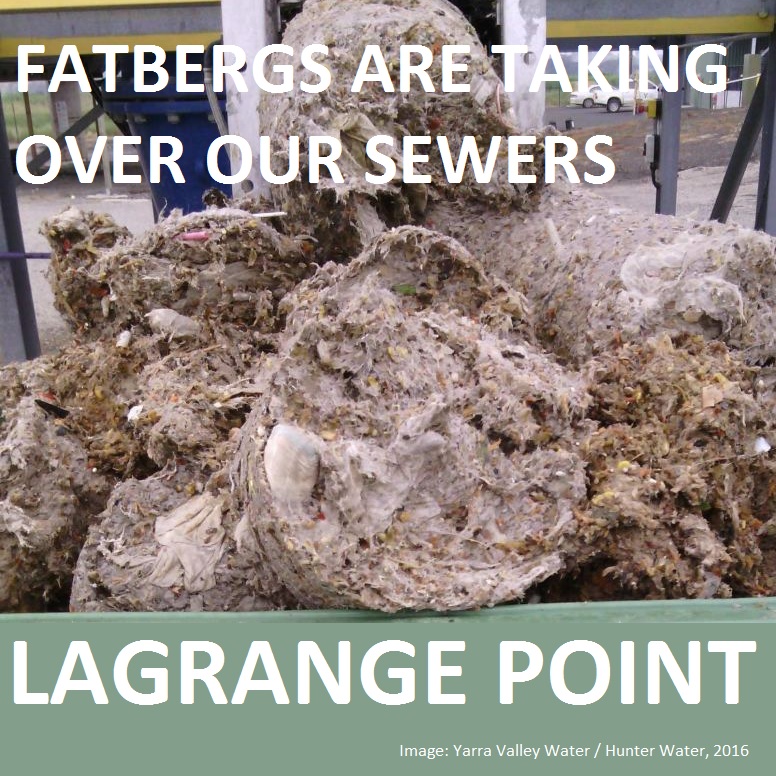
Monday Aug 20, 2018
Monday Aug 20, 2018
Keeping the world clean is a tricky job. You have to fight fatbergs, recycle large amounts of mess and even keep tanks of food clean. Fortunately material scientists keep inventing new methods, and re-applying old ones to help improve our planet. From using old mining techniques to recycle lithium ion batteries, to using oils to keep food equipment clean, plus tacking the monsters of the sewer - fatbergs.
REFERENCES
- Ruiting Zhan, Zachary Oldenburg, Lei Pan. Recovery of active cathode materials from lithium-ion batteries using froth flotation. Sustainable Materials and Technologies, 2018; 17: e00062 DOI: 10.1016/j.susmat.2018.e00062
- Tarek S. Awad, Dalal Asker, Benjamin D. Hatton. Food-Safe Modification of Stainless Steel Food-Processing Surfaces to Reduce Bacterial Biofilms. ACS Applied Materials & Interfaces, 2018; 10 (27): 22902 DOI: 10.1021/acsami.8b03788
- Asha Srinivasan, Moutoshi Saha, Kit Caufield, Otman Abida, Ping Huang Liao, Kwang Victor Lo. Microwave-Enhanced Advanced Oxidation Treatment of Lipids and Food Wastes. Water, Air, & Soil Pollution, 2018; 229 (7) DOI: 10.1007/s11270-018-3894-y
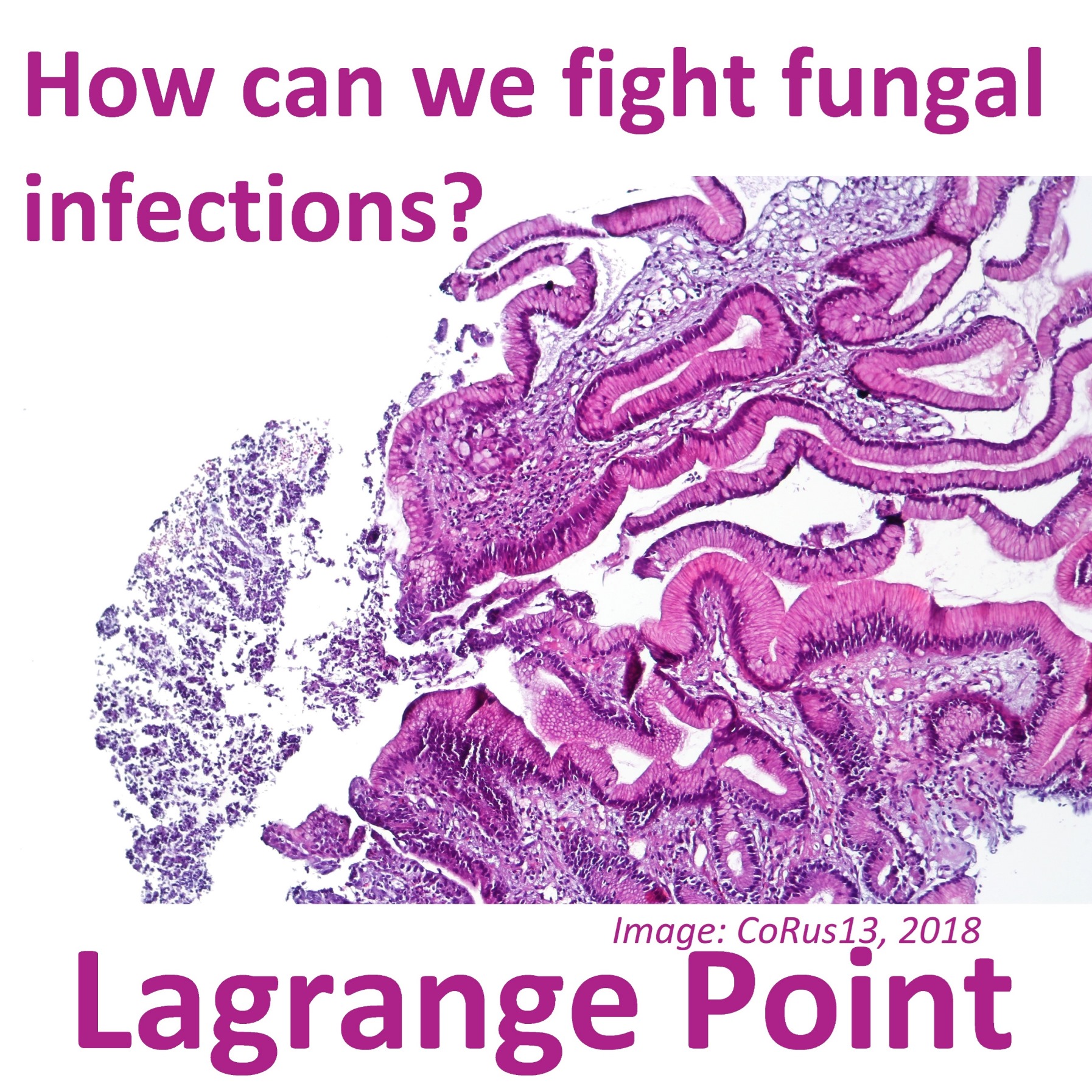
Monday Aug 13, 2018
Episode 287 - Fighting back against fungal infections
Monday Aug 13, 2018
Monday Aug 13, 2018
Everyone knows about bacteria and viruses, but fungal infections can also wreak havoc with our health. Since we know so little about them, fighting back is difficult. But we can learn a lot but diving deep into the way fungal infections are structured, how they fight back and how they fight eachother.
- Xue Kang, Alex Kirui, Artur Muszyński, Malitha C. Dickwella Widanage, Adrian Chen, Parastoo Azadi, Ping Wang, Frederic Mentink-Vigier, Tuo Wang. Molecular architecture of fungal cell walls revealed by solid-state NMR. Nature Communications, 2018; 9 (1) DOI: 10.1038/s41467-018-05199-0
- Timothy M. Tucey, Jiyoti Verma, Paul F. Harrison, Sarah L. Snelgrove, Tricia L. Lo, Allison K. Scherer, Adele A. Barugahare, David R. Powell, Robert T. Wheeler, Michael J. Hickey, Traude H. Beilharz, Thomas Naderer, Ana Traven. Glucose Homeostasis Is Important for Immune Cell Viability during Candida Challenge and Host Survival of Systemic Fungal Infection. Cell Metabolism, 2018; 27 (5): 988 DOI: 10.1016/j.cmet.2018.03.019
- University of Wisconsin-Madison. (2018, May 22). A hidden world of communication, chemical warfare, beneath the soil. ScienceDaily. Retrieved July 21, 2018 from www.sciencedaily.com/releases/2018/05/180522082202.htm

Monday Aug 06, 2018
Monday Aug 06, 2018
The Fields Medals for 2018 have been announced, and Australian Mathematician, Professor Akshay Venkatesh was announced as one of the four recipients. Mathematics can seem like a group of different and diverse subjects, but Professor Venkatesh's work tied different areas of mathematics together to use one toolkit to solve problems in another area. We dive deep into the complex world of mathematics and look at the Fields Medals 2018.
References:
- Slezak, M. (2018). This Aussie genius has won the 'Nobel Prize of mathematics'. [online] ABC News. Available at: http://www.abc.net.au/news/2018-08-02/fields-medal-aussie-genius-akshay-venkatesh-mathematics-prize/10062218 [Accessed 4 Aug. 2018].
- Jackson, A. (2018). [online] Mathunion.org. Available at: https://www.mathunion.org/fileadmin/IMU/Prizes/Fields/2018/venkatesh-final.pdf [Accessed 4 Aug. 2018].
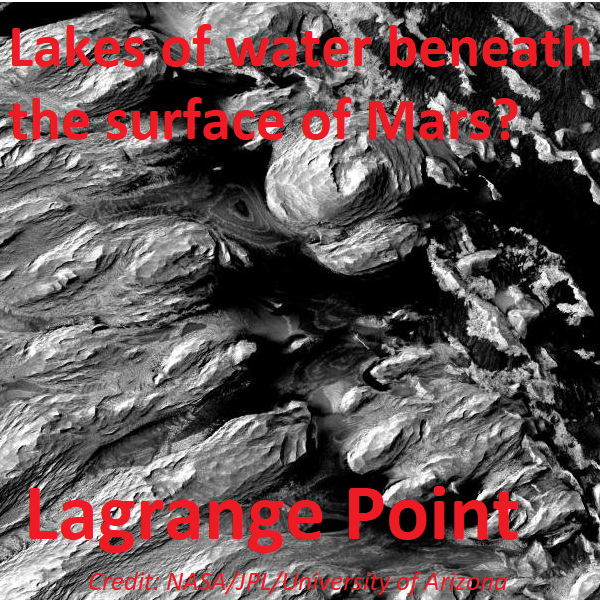
Monday Jul 30, 2018
Monday Jul 30, 2018
We are often tantalized by the prospect of water on Mars, but thanks to a Teenage Satellite we have found lakes of water on Mars, just beneath the surface. Plus we find out where all that martian dust comes from and check in on everyone's favourite Comet, 67-p.
- R. Orosei, S. E. Lauro, E. Pettinelli, A. Cicchetti, M. Coradini, B. Cosciotti, F. Di Paolo, E. Flamini, E. Mattei, M. Pajola, F. Soldovieri, M. Cartacci, F. Cassenti, A. Frigeri, S. Giuppi, R. Martufi, A. Masdea, G. Mitri, C. Nenna, R. Noschese, M. Restano, R. Seu. Radar evidence of subglacial liquid water on Mars. Science, 2018; eaar7268 DOI: 10.1126/science.aar7268
- Horner, J. (2018, July 26). Discovered: A huge liquid water lake beneath the southern pole of Mars. Retrieved from http://theconversation.com/discovered-a-huge-liquid-water-lake-beneath-the-southern-pole-of-mars-100523
- Lujendra Ojha, Kevin Lewis, Suniti Karunatillake, Mariek Schmidt. The Medusae Fossae Formation as the single largest source of dust on Mars. Nature Communications, 2018; 9 (1) DOI: 10.1038/s41467-018-05291-5
- K. L. Heritier, K. Altwegg, J.-J. Berthelier, A. Beth, C. M. Carr, J. De Keyser, A. I. Eriksson, S. A. Fuselier, M. Galand, T. I. Gombosi, P. Henri, F. L. Johansson, H. Nilsson, M. Rubin, C. Simon Wedlund, M. G. G. T. Taylor, E Vigren. On the origin of molecular oxygen in cometary comae. Nature Communications, 2018; 9 (1) DOI: 10.1038/s41467-018-04972-5
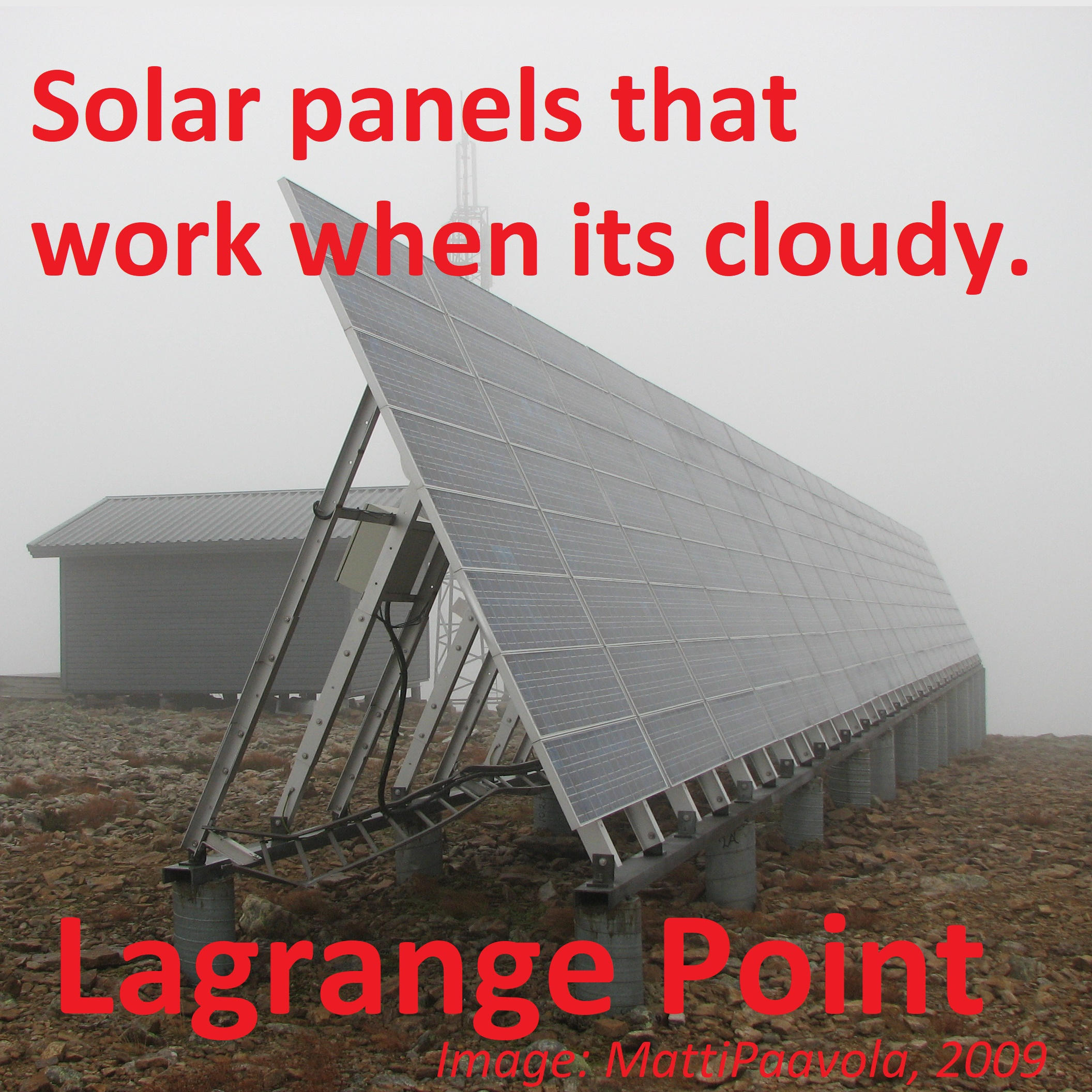
Monday Jul 23, 2018
Monday Jul 23, 2018
Solar Panels keep getting better, but what if we could have solar power even when it's very overcast? Plus is there a way to make concrete greener and less carbon intensive? What if one of those solutions also helped take care of waste product from Coal Power Plants? We look at innovative green technologies this week in Lagrange Point.
- Joshua Shank, Emil A. Kadlec, Robert L. Jarecki, Andrew Starbuck, Stephen Howell, David W. Peters, Paul S. Davids. Power Generation from a Radiative Thermal Source Using a Large-Area Infrared Rectenna. Physical Review Applied, 2018; 9 (5) DOI: 10.1103/PhysRevApplied.9.054040
- Sarvesh Kumar Srivastava, Przemyslaw Piwek, Sonal R. Ayakar, Arman Bonakdarpour, David P. Wilkinson, Vikramaditya G. Yadav. A Biogenic Photovoltaic Material. Small, 2018; 14 (26): 1800729 DOI: 10.1002/smll.201800729
- Gang Xu, Jing Zhong, Xianming Shi. Influence of graphene oxide in a chemically activated fly ash. Fuel, 2018; 226: 644 DOI: 10.1016/j.fuel.2018.04.033
- Sung Hoon Hwang, Rouzbeh Shahsavari. High calcium cementless fly ash binder with low environmental footprint: Optimum Taguchi design. Journal of the American Ceramic Society, 2018; DOI: 10.1111/jace.15873
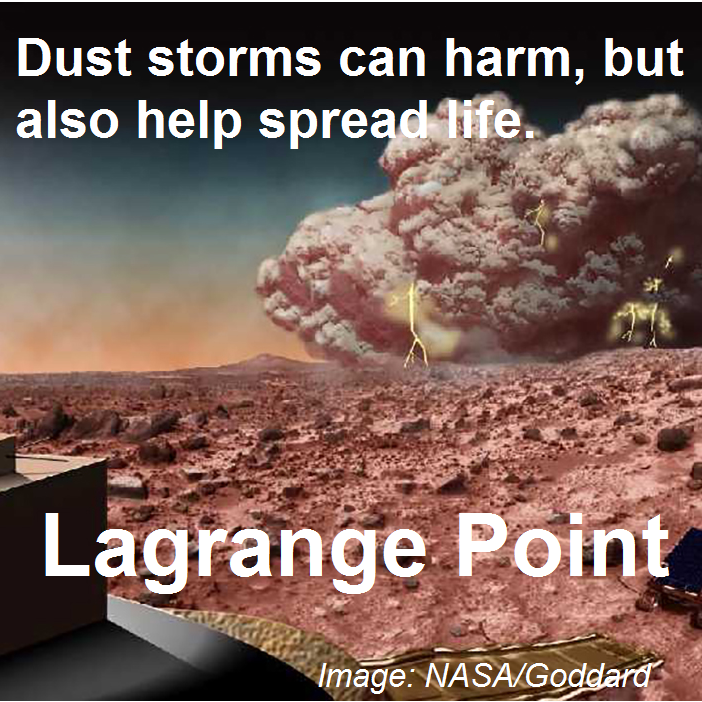
Monday Jul 16, 2018
Episode 283 - Dust storms carrying life, harming life and engulfing a planet
Monday Jul 16, 2018
Monday Jul 16, 2018
Dust storms can be hazardous, especially when they engulf an entire planet like on Mars. They can also carry pollution across national borders and contaminate wide areas. But Dust Storms may also hold the secret for how life can spread across vast deserts. This week we look at dust storms of this world and out of this world.
- Authors: J. A. Rivas Jr., J. E. Mohl, R. S. Van Pelt, M.‐Y. Leung, R. L. Wallace, T. E. Gill, E. J. Walsh. Evidence for regional aeolian transport of freshwater micrometazoans in arid regions. Limnology and Oceanography Letters, 2018; DOI: 10.1002/lol2.10072
- Tuyet Nam Thi Nguyen, Kuen-Sik Jung, Ji Min Son, Hye-Ok Kwon, Sung-Deuk Choi. Seasonal variation, phase distribution, and source identification of atmospheric polycyclic aromatic hydrocarbons at a semi-rural site in Ulsan, South Korea. Environmental Pollution, 2018; 236: 529 DOI: 10.1016/j.envpol.2018.01.080
- Penn State. (2018, June 28). Mars dust storm may lead to new weather discoveries. ScienceDaily. Retrieved July 14, 2018 from www.sciencedaily.com/releases/2018/06/180628124412.htm
- NASA/Goddard Space Flight Center. (2018, June 20). Martian dust storm grows global: Curiosity captures photos of thickening haze. ScienceDaily. Retrieved July 13, 2018 from www.sciencedaily.com/releases/2018/06/180620170956.htm
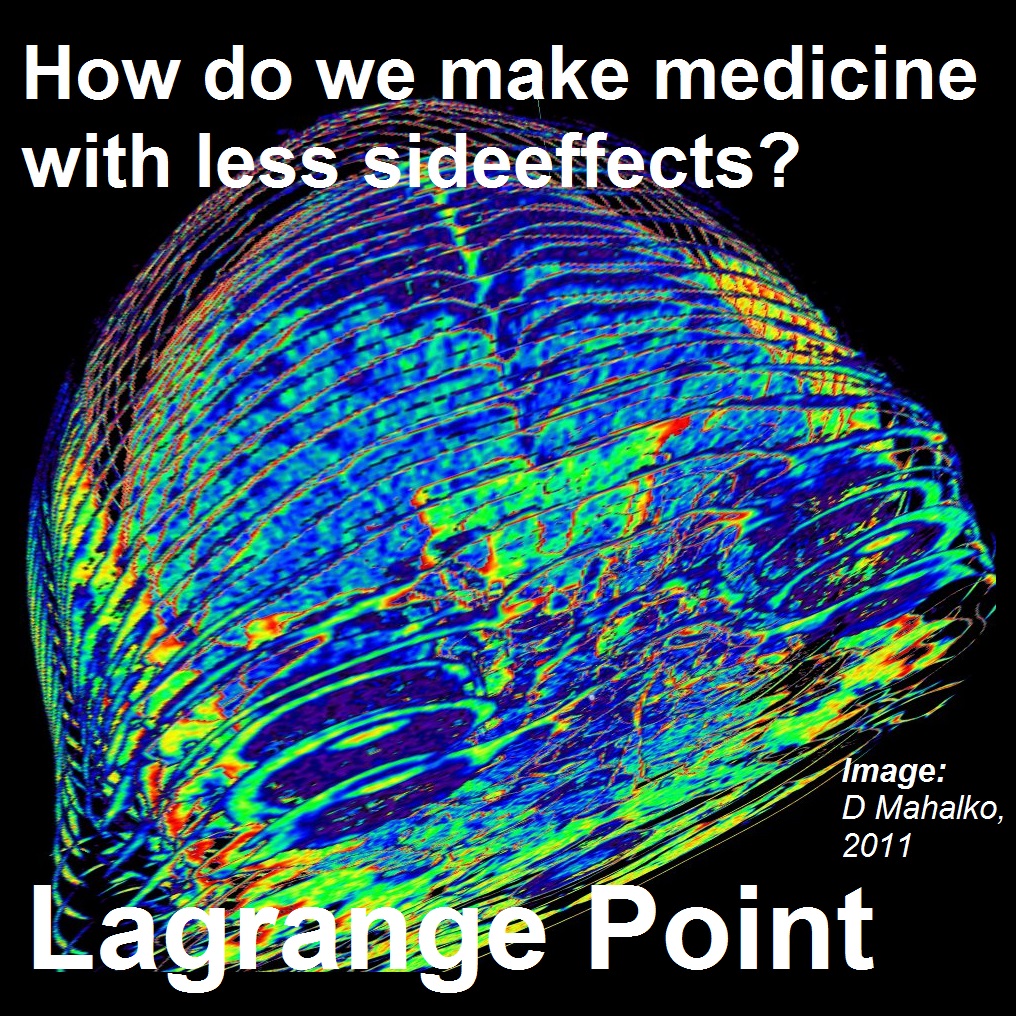
Monday Jul 09, 2018
Episode 282 - More precise precision medicine plus last chance medications
Monday Jul 09, 2018
Monday Jul 09, 2018
How far would you go to find a treatment that helps you or a loved one suffering from a chronic condition? Is it worth the side effects or the pain of jumping through bureaucratic hoops? Is it worth risking the black market? Plus we find out ways to make precision medicine even more precise to rule out side effects.
References:
- Bell, F. (2017, March 01). Sick kids chosen as first patients to receive legal medicinal cannabis in Victoria. Retrieved from http://www.abc.net.au/news/2017-03-01/children-with-epilepsy-receive-legal-medicinal-cannabis-victoria/8313902
- Dunstan, J. (2018, June 08). Dad defends medicinal cannabis program as kids drop out. Retrieved from http://www.abc.net.au/news/2018-06-08/victorian-medicinal-cannabis-trial-kids-drop-out/9848596
- Medical Marijuana and Epilepsy. (n.d.). Retrieved from https://www.epilepsy.com/learn/treating-seizures-and-epilepsy/other-treatment-approaches/medical-marijuana-and-epilepsy
- Understanding Epilepsy. (n.d.). Retrieved from https://www.epilepsy.org.au/about-epilepsy/understanding-epilepsy/
- Zafar, A. (2017, May 26). Cannabis compound shown to slash seizures in kids with rare form of epilepsy | CBC News. Retrieved from https://www.cbc.ca/news/health/dravet-syndrome-epilepsy-cbd-1.4130180
- A. Suraev, N. Lintzeris, J. Stuart, R. C. Kevin, R. Blackburn, E. Richards, J. C. Arnold, C. Ireland, L. Todd, D. J. Allsop, I. S. McGregor. Composition and Use of Cannabis Extracts for Childhood Epilepsy in the Australian Community. Scientific Reports, 2018; 8 (1) DOI: 10.1038/s41598-018-28127-0
- Lei Zhang, Peng Zhang, Guangfu Wang, Huaye Zhang, Yajun Zhang, Yilin Yu, Mingxu Zhang, Jian Xiao, Piero Crespo, Johannes W. Hell, Li Lin, Richard L. Huganir, J. Julius Zhu. Ras and Rap Signal Bidirectional Synaptic Plasticity via Distinct Subcellular Microdomains. Neuron, 2018; 98 (4): 783 DOI: 10.1016/j.neuron.2018.03.049
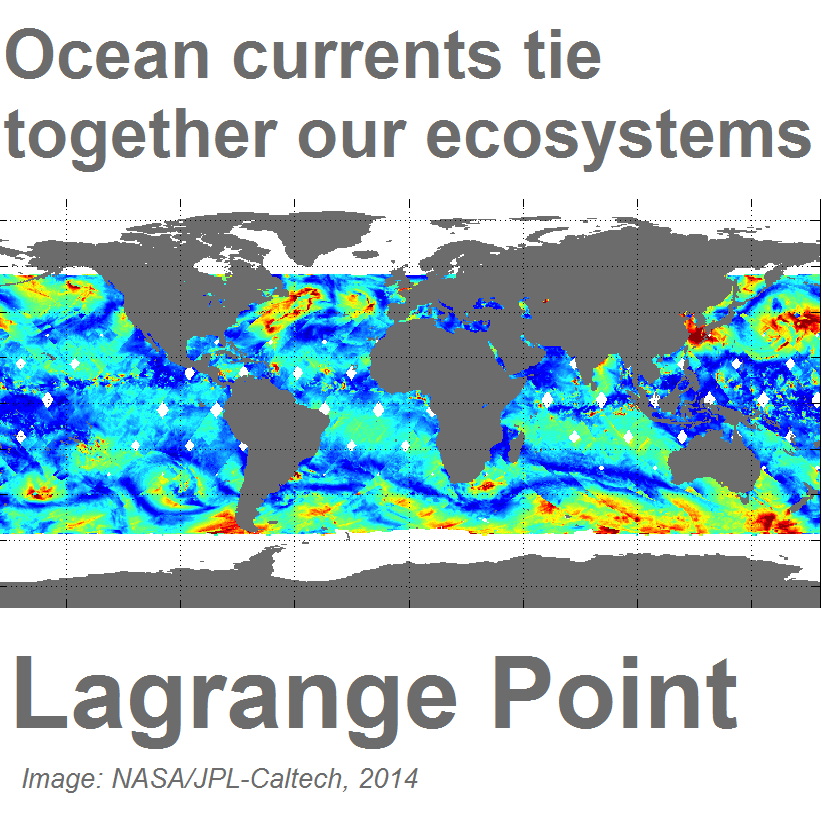
Monday Jul 02, 2018
Monday Jul 02, 2018
This week we look into three stories about how oceans tie our planet together. Our ecosystems are often linked in unusual ways that are not immediately obvious. Ocean currents can tie ecosystems across the world together, impacting migratory species, local environments and ecosystems. Sometimes these impacts are short term, other times they play out over years, decades and centuries.
References:
- Carl J. Reddin, Ádám T. Kocsis, Wolfgang Kiessling. Marine invertebrate migrations trace climate change over 450 million years. Global Ecology and Biogeography, 2018; DOI: 10.1111/geb.12732
- Hector M. Guzman, Catalina G. Gomez, Alex Hearn, Scott A. Eckert. Longest recorded trans-Pacific migration of a whale shark (Rhincodon typus). Marine Biodiversity Records, 2018; 11 (1) DOI: 10.1186/s41200-018-0143-4
- Jocelyn Champagnon, Jean-Dominique Lebreton, Hugh Drummond, David J. Anderson. Pacific Decadal and El Niño oscillations shape survival of a seabird. Ecology, 2018; 99 (5): 1063 DOI: 10.1002/ecy.2179
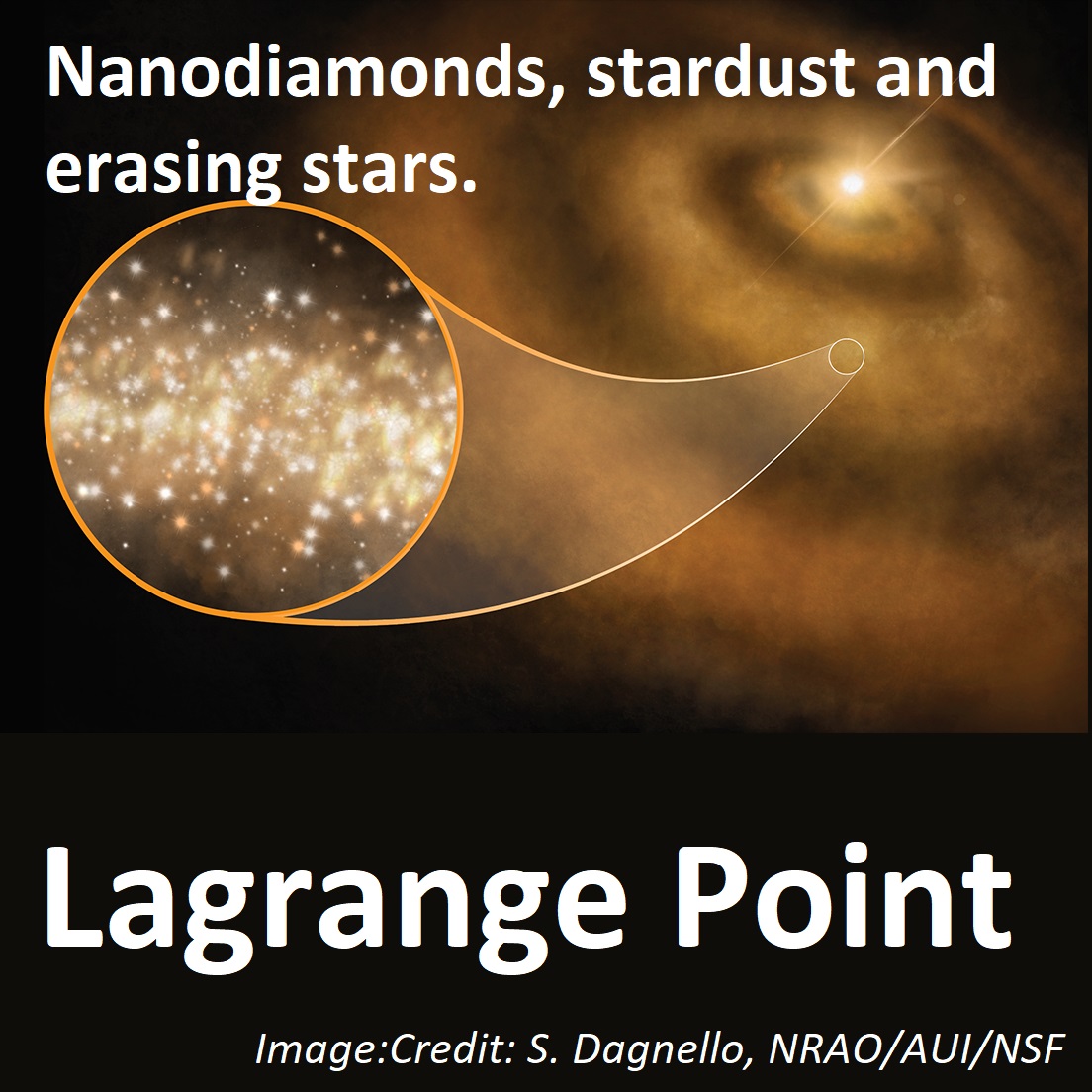
Monday Jun 25, 2018
Episode 280 - Nanodiamonds, Stardust, Comets and erasing Stars
Monday Jun 25, 2018
Monday Jun 25, 2018
Astronomy can be quite beautiful at times. From nano-diamonds giving the galaxy a shimmering glow, to stardust leftover from the creation of the solar system hitching a ride on a coment. We also find out about new ways to hunt for exoplanets by erasing stars with filters.
- Hope A. Ishii, John P. Bradley, Hans A. Bechtel, Donald E. Brownlee, Karen C. Bustillo, James Ciston, Jeffrey N. Cuzzi, Christine Floss, David J. Joswiak. Multiple generations of grain aggregation in different environments preceded solar system body formation. Proceedings of the National Academy of Sciences, 2018; 201720167 DOI: 10.1073/pnas.1720167115
- J. S. Greaves, A. M. M. Scaife, D. T. Frayer, D. A. Green, B. S. Mason, A. M. S. Smith. Anomalous microwave emission from spinning nanodiamonds around stars. Nature Astronomy, 2018; DOI: 10.1038/s41550-018-0495-z
- H.J. Hoeijmakers, H. Schwarz, I.A.G. Snellen, R.J. de Kok, M. Bonnefoy, G. Chauvin, A.M. Lagrange, J.H. Girard. Medium-resolution integral-field spectroscopy for high-contrast exoplanet imaging: Molecule maps of the beta Pictoris system with SINFONI. Astronomy & Astrophysics, 2018; DOI: 10.1051/0004-6361/201832902
- Image Credit: S. Dagnello, NRAO/AUI/NSF
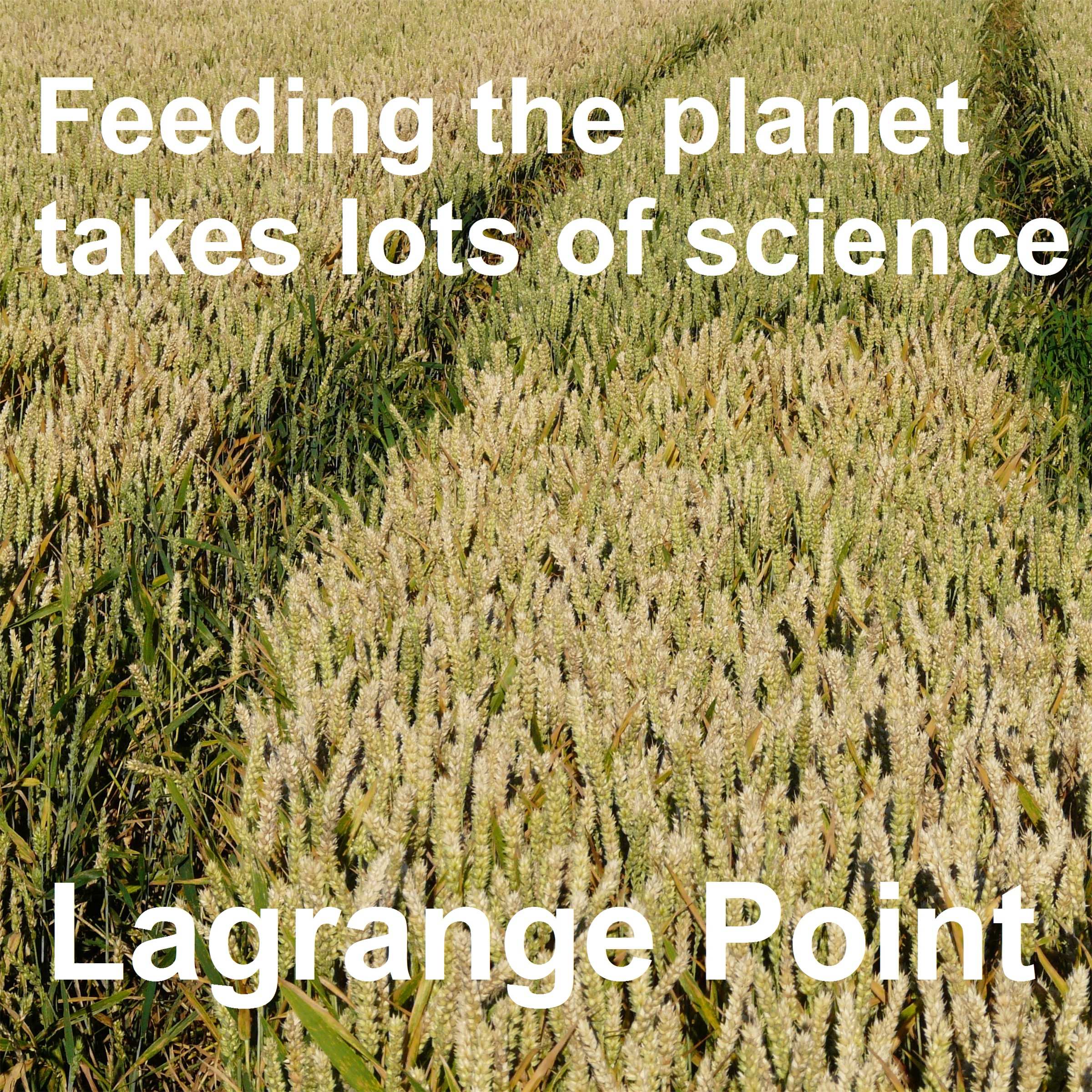
Monday Jun 18, 2018
Episode 279 - Helping farmers fight back against climate change
Monday Jun 18, 2018
Monday Jun 18, 2018
How can we feed the planet? What can we do to improve our crop yields particularly for the staples like rice and corn? How can NASA help farmers deal with a changing climate?
References:
- Cacious Stanford Nyakurwa, Edmore Gasura, Peter S. Setimela, Stanford Mabasa, Joyful Tatenda Rugare, Simbarashe Mutsvanga. Reaction of New Quality Protein Maize Genotypes to. Crop Science, 2018; 58 (3): 1201 DOI: 10.2135/cropsci2017.10.0639
- Eduardo Anibele Streck, Ariano Martins de Magalhaes, Gabriel Almeida Aguiar, Paulo Karling Henrique Facchinello, Paulo Ricardo Reis Fagundes, Daniel Fernandes Franco, Maicon Nardino, Antônio Costa de Oliveira. Genetic Progress in 45 Years of Irrigated Rice Breeding in Southern Brazil. Crop Science, 2018; 58 (3): 1094 DOI: 10.2135/cropsci2017.06.0383
- NASA/Goddard Space Flight Center. (2018, June 1). NASA soil moisture data advances global crop forecasts. ScienceDaily. Retrieved June 15, 2018 from www.sciencedaily.com/releases/2018/06/180601134729.htm
